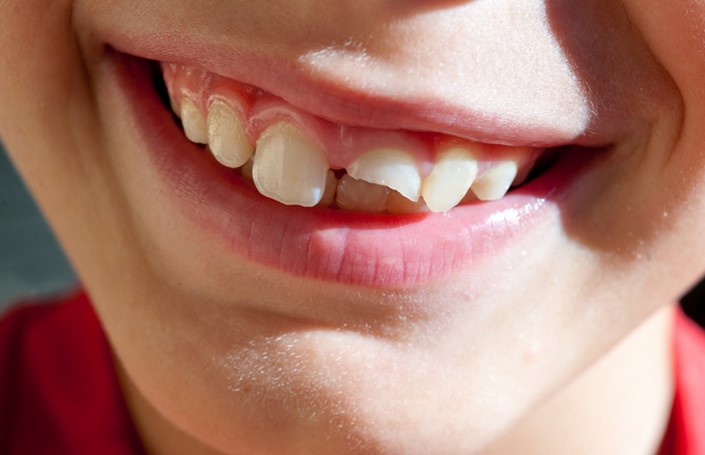Introduction
A curious incident occurred recently as my tooth unexpectedly cracked in half. Surprisingly, despite the dramatic fracture, there was an absence of any accompanying pain. This curious situation prompted me to delve into the intriguing world of dental mysteries and led me to seek answers regarding this painless dental dilemma.

A cracked tooth can be a distressing situation, causing immediate concern for anyone experiencing it. A cracked tooth, even if it doesn’t hurt at the moment, requires prompt attention to prevent potential complications down the line. While it may not be causing pain now, a cracked tooth can become painful and lead to more severe dental issues if left untreated. This article will guide you through the steps to take when you find yourself with a cracked tooth that doesn’t hurt.
1. Assess the Situation
The first step in dealing with a cracked tooth is to assess the severity of the crack. Not all cracks are the same, and some may require more urgent care than others. There are several types of cracks that can occur in teeth:
– Craze Lines: These are small, superficial cracks in the enamel that don’t typically cause pain. They are often considered cosmetic issues.
– Fractured Cusp: This type of crack occurs when a piece of the tooth’s chewing surface breaks off. It may not cause immediate pain but can lead to sensitivity over time.
– Cracked Tooth: A cracked tooth involves a more significant crack that extends into the tooth’s deeper layers. It can cause intermittent pain but might not hurt all the time.
– Split Tooth: When a crack extends from the surface of the tooth down to the root, it’s referred to as a split tooth. This type of crack will likely cause severe pain and require immediate attention.
– Vertical Root Fracture: This is a crack that starts in the root and extends toward the chewing surface. It can lead to discomfort but may not always be painful.
2. Rinse and Clean
After assessing the situation, it’s important to rinse your mouth with warm water to ensure that the area around the cracked tooth is clean. This can help prevent infection and remove any food particles that may be trapped in the crack.
3. Avoid Certain Foods
While your cracked tooth may not hurt now, it’s important to avoid certain foods that could exacerbate the situation. Hard, crunchy, or sticky foods can put additional stress on the cracked tooth and potentially worsen the damage. Opt for softer foods that are easier on your teeth until you can see a dentist.
4. Apply Dental Wax
Dental wax, which is often used for orthodontic purposes, can provide a temporary solution for covering the sharp edges of a cracked tooth. Applying a small amount of dental wax to the affected area can help prevent irritation to your tongue, cheek, or gums.
5. Over-the-Counter Pain Relief
If you’re experiencing any discomfort, you can take over-the-counter pain relievers like ibuprofen or acetaminophen. These medications can help manage any mild pain or inflammation associated with a cracked tooth.
6. Schedule an Appointment with Your Dentist
While your cracked tooth might not hurt right now, it’s crucial to schedule an appointment with your dentist as soon as possible. A cracked tooth is a dental emergency, even if it isn’t causing pain at the moment. Your dentist will be able to assess the extent of the damage and recommend appropriate treatment to prevent the crack from worsening.
7. Treatment Options
The treatment for a cracked tooth will depend on the severity of the crack. For minor cracks, dental bonding or a dental veneer may be sufficient to restore the tooth’s appearance and function. If the crack is more significant, a dental crown might be necessary to provide structural support to the tooth.
In cases where the crack has extended into the tooth’s pulp (the innermost part of the tooth containing nerves and blood vessels), a root canal treatment might be required to remove the damaged tissue and save the tooth. In the most severe cases, where the crack has caused irreversible damage to the tooth’s structure, extraction might be the only option.
8. Prevention for the Future
After your cracked tooth is treated, it’s essential to take steps to prevent similar issues in the future. Avoid biting down on hard objects, using your teeth as tools, or grinding your teeth, as these behaviors can increase the risk of tooth fractures. Regular dental check-ups can help catch any potential cracks early, allowing for timely intervention.
Conclusion
A cracked tooth, even if it doesn’t hurt at the moment, should not be ignored. Taking prompt action, including assessing the severity of the crack, maintaining good oral hygiene, avoiding certain foods, and scheduling an appointment with your dentist, can prevent the situation from worsening. Remember that even small cracks can lead to more significant dental issues if left untreated, so it’s essential to address the problem early on to maintain your oral health and well-being.